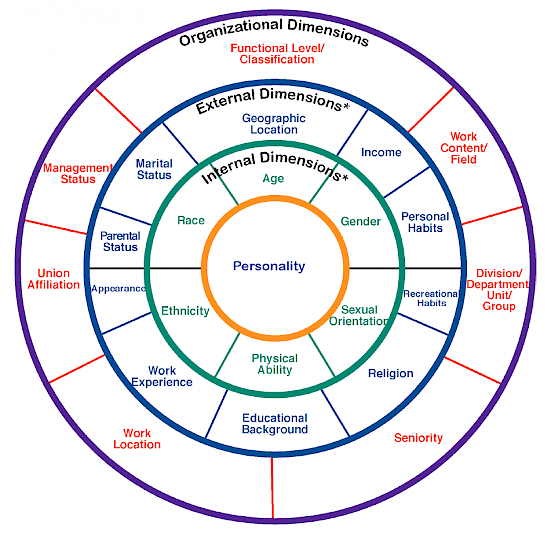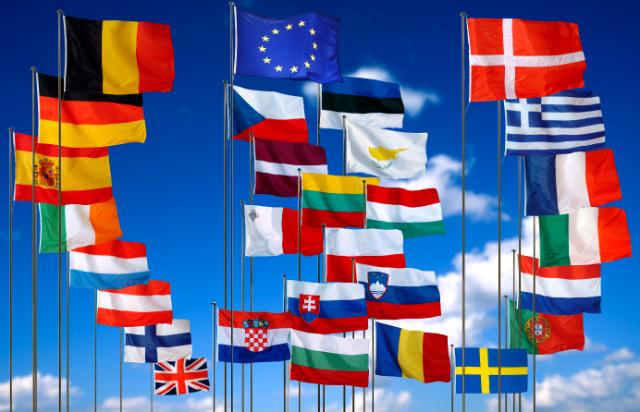 Increasing international mobility and cross-border migration result in a more diverse population in many countries these days. As such this is not a totally new phenomenon, but for those who have other agendas contrary to this development, it can be a potentially problematic threat. Diversity is on increase in Europe and this is something we cannot deny. Knowing that diversity is nothing static, but something steadily changing, it challenges us individuals to learn, re-learn and unlearn on a constant basis.
Increasing international mobility and cross-border migration result in a more diverse population in many countries these days. As such this is not a totally new phenomenon, but for those who have other agendas contrary to this development, it can be a potentially problematic threat. Diversity is on increase in Europe and this is something we cannot deny. Knowing that diversity is nothing static, but something steadily changing, it challenges us individuals to learn, re-learn and unlearn on a constant basis.
Understanding diversity begins with understanding oneself. In simple terms, diversity means recognising differences and understanding that each individual is unique. Respecting each other and knowing how we are similar and different will help us to develop better human relations. We are similar and different in so many ways, let alone in terms of age, gender, ethnicity, sexual orientation, worldviews, political affiliations, educational attainment, career, physical abilities, value base, family history and many more.
There are many ways to be sensitive to diversity in our everyday lives. For instance, we should make an effort to refrain from stereotyping and avoid stereotypical comments. We should also watch our behaviour and humour in general, whereby we can act as a role model and set a good example for other people. With an open and curious mind we can better recognise different forms of diversity and learn to be more tolerant towards all kinds of differences. True tolerance is based on the profound conviction that diversity is a blessing, not a curse. An inclusive and integrated society (or workplace) can, among other things, be built on valuing mutual recognition, clear communication and critical self-reflection.
Diversity Wheel
In my search of practical, self-reflective tools to deal with diversity, I made a discovery the other day and became acquainted with the Diversity Wheel model. I got really excited about it. The Diversity Wheel gives an overview of the dimensions of diversity that are present and active in one’s workplace or environment. It consists of four layers of diversity (personality, internal, external and organisational levels) through which stimuli, information and experience are processed by all of us. By means of the model we can explore differences, but also similarities from multiple perspectives, get hold of our own assumptions and behavioural patterns.
· Personality (1st layer) shows how a person interacts with others and what his/her characteristics are, whether s/he is an introvert, ambivert or extrovert, active or passive, a fast and dynamic doer or a silent and reflective thinker etc., and how all these aspects together affect the way the person is treated by others.
· Internal dimensions (2nd layer) are based on six aspects that an individual possibly cannot choose or control him/herself, i.e. they are given: age, gender, sexual orientation, physical ability, ethnicity and race. These aspects influence how the person is treated when s/he is dealing with diversity in communication and interaction with others.
· External dimensions (3rd layer) depict the outcomes of life experiences and decisions/choices taken. Altogether there are ten different areas (such as education, work experience, income, marital status, … ) through which people can be appreciated or degraded, connected or disconnected depending on how exactly these aspects are seen and applied.
· Organisational dimensions (4th layer) include elements that are integrated into work and social interaction in an organization/at a work place. They contain a number of hierarchical as well as functional aspects of working life and how a person relates to them in the context of diversity.
The Diversity Wheel is a good instrument for shedding light on various, sometimes hidden and less explicit aspects of life in an organization where diversity is present every single moment. Using this tool can make things better visible to people who work together and that way increase their understanding and acceptance of diversity at work. Further, I am convinced that the Diversity Wheel can be an eye-opening instrument to be applied to guidance and counselling, too.
Image: The Diversity Wheel
N.B. The original Diversity Wheel was introduced in Marilyn Loden and Judy Rosener’s book entitled “Workforce America! Managing Employee Diversity as a Vital Resource” (1991).



 Increasing international mobility and cross-border migration result in a more diverse population in many countries these days. As such this is not a totally new phenomenon, but for those who have other agendas contrary to this development, it can be a potentially problematic threat. Diversity is on increase in Europe and this is something we cannot deny. Knowing that diversity is nothing static, but something steadily changing, it challenges us individuals to learn, re-learn and unlearn on a constant basis.
Increasing international mobility and cross-border migration result in a more diverse population in many countries these days. As such this is not a totally new phenomenon, but for those who have other agendas contrary to this development, it can be a potentially problematic threat. Diversity is on increase in Europe and this is something we cannot deny. Knowing that diversity is nothing static, but something steadily changing, it challenges us individuals to learn, re-learn and unlearn on a constant basis.